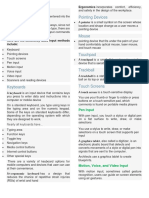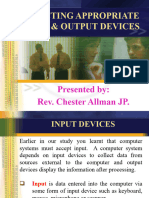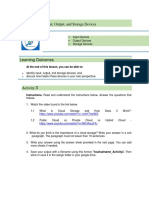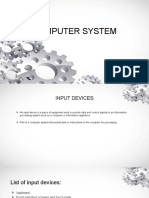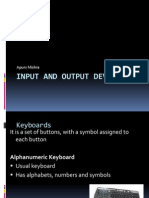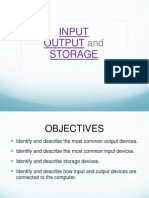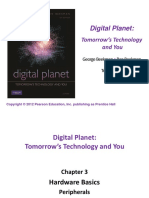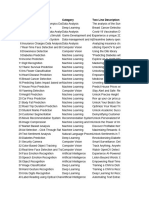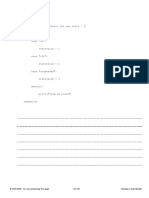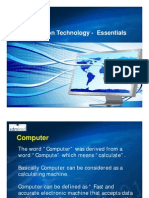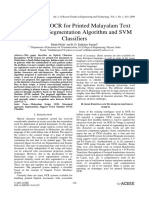0% found this document useful (0 votes)
13 views26 pagesLec 5-Input and Output
The document outlines the learning objectives for an introductory computer science course, focusing on input and output devices. It covers various types of input devices (like keyboards, pointing devices, and scanners) and output devices (including monitors, printers, and audio devices), explaining their functions and features. Additionally, it discusses combination devices and the importance of ergonomics in minimizing physical damage.
Uploaded by
mohamed.mostafa7531Copyright
© © All Rights Reserved
We take content rights seriously. If you suspect this is your content, claim it here.
Available Formats
Download as PDF, TXT or read online on Scribd
0% found this document useful (0 votes)
13 views26 pagesLec 5-Input and Output
The document outlines the learning objectives for an introductory computer science course, focusing on input and output devices. It covers various types of input devices (like keyboards, pointing devices, and scanners) and output devices (including monitors, printers, and audio devices), explaining their functions and features. Additionally, it discusses combination devices and the importance of ergonomics in minimizing physical damage.
Uploaded by
mohamed.mostafa7531Copyright
© © All Rights Reserved
We take content rights seriously. If you suspect this is your content, claim it here.
Available Formats
Download as PDF, TXT or read online on Scribd
/ 26





